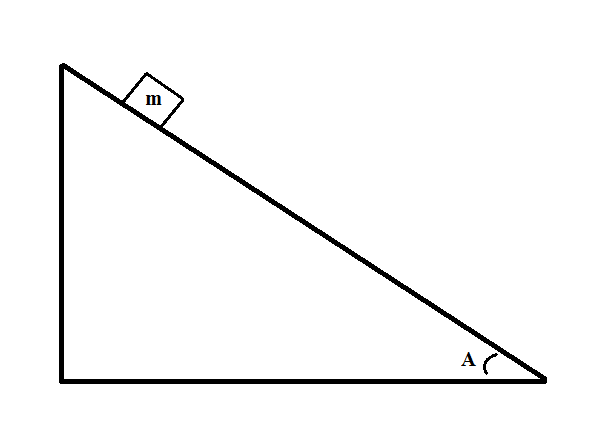All AP Physics 1 Resources
Example Questions
Example Question #81 : Ap Physics 1
A bungie jumper of mass 


Think about this scenario practically. After the jumper jumps, he will begin accelerating at a rate of 


The main expression we will use will be the one for conservation of energy:
Plugging in our expressions for these variables and removing initial kinetic energy, we get:
Rearranging for velocity:
We simply need to find the height distance between the jumper's initial position and the position at which the jumper is traveling at his or her greatest velocity. As previously mentioned, the point of highest velocity is the point at which the force from the bungie cord is equal and opposite to the force of gravity:
Rearranging for 
This is the distance that the bungie is stretched. Therefore, we can say that the total height distance between the initial and final state is the length of the unstretched bungie cord plus the distance the cord has stretched:
Plugging this back into the equation for final velocity, we get:
We have values for all of our variables, so we can simply solve for the final velocity:
Example Question #91 : Ap Physics 1
A few friends are having a water balloon fight. One friend throws a balloon of mass 


We can use the equation for conservation of energy to solve this problem:
If we set the original height to 
We know all of the variables, allowing us to solve:
Example Question #92 : Ap Physics 1
A man of mass 


We can use the equation for conservation of energy to solve this problem:
Here, 
If we say that the height at which the diver reaches terminal velocity is equal to 0, we can rewrite:
Plugging in expressions for potential and kinetic energy and rearranging for air resistance, we get:
We have values for each variable, allowing us to solve:
Example Question #2 : Kinetic Energy
Consider the following system:

There is no friction between the block and plane, and the angle measures 

We can use the equation for conservation of energy to solve this problem:
If we designate the final height to be zero, we can eliminate final potential energy and initial kinetic energy, since the block starts at rest. Therefore, we get:
Substitute expressions for each type of energy:
Eliminate mass and rearrange for final velocity:
We don't know what the initial height is at this point. We do know what the distance traveled down the slope and angle are, so we can figure out the distance traveled using the following equation:
Rearranging for initial height, we get:
Now we have all of the information we need to solve for the final velocity:
Example Question #4 : Kinetic Energy
A bullet with a mass of 

The equation for kinetic energy is:
Plug in known values and solve.
Example Question #2 : Kinetic Energy
A dumbell with a mass of 

Since the stone starts at rest (it has an initial velocity of zero), its velocity at any time is given as:
At a time of three seconds, the velocity towards the ground is thus:
It's kinetic energy at three seconds is therefore:
Example Question #52 : Newtonian Mechanics
Toby throws a 


What will the ball's kinetic energy be after one second?
This problem can be approached in multiple ways; two will be shown here:
One method is to focus solely on the kinematics and related equations; since there is an initial velocity of 
With this, the kinetic energy can be found:
Another although longer method is to use an energy balance:
Wherein due to conservation of energy, the total energy of state 1 is equivalent to the total energy of state 2.
Now to find 
Therefore:
Which confirms the answer we used with the earlier method.
Example Question #3 : Kinetic Energy
An 

In this question, we are provided with the mass of an object as well as its velocity, and we are being asked to determine its kinetic energy. To do so, we'll need to use the following equation:
Plugging in the values given, we obtain:
Example Question #4 : Kinetic Energy
Two objects, one of mass, 



The heavier object, because the mass is squared in the Kinetic Energy formula
The heavier object, because the velocity is square rooted in the Kinetic Energy formula
The objects stop in the same amount of time, as their masses and velocities cancel out.
The lighter object, because the velocity is squared in the Kinetic Energy formula
The lighter object, because the mass is square rooted in the Kinetic Energy formula
The lighter object, because the velocity is squared in the Kinetic Energy formula
Examining the formula for kinetic energy will allow us to compare the two objects. The formula, 
Example Question #10 : Kinetic Energy
In an investigation into energy, a student compresses a spring a distance of 



All of the potential energy stored in the spring is converted to kinetic energy of the cart in both experiments. Although the cart's velocity will be less in the second experiment, its kinetic energy will be the same.
Certified Tutor
Certified Tutor
All AP Physics 1 Resources


















































































































